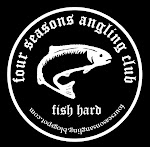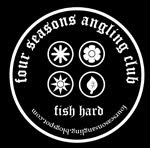
Stilt fishing is mainly confined to a small part ofGalie District, in southwestern Sri Lanka. Fishing is done with arod and line whilesitting on a cross bar tied to a wooden pole driven into the coral reef. Barbiess hooks, made by the fishermen, are without bait to catch spotted herring andsmall mackerel. The method has existed for about 50 years. After disputes between groups of fishermen over fishing rights, different areas were allotted to different groups. Each fishing reef is used only by fishermen from a particular village or group ofvillages. The fishery is managed by the fishermen. Craft and nets are forbidden, as are certain types of hook. However, the use by outsiders ofsmall-mesh nets to catch fish approaching or leaving the reefs and the building ofhotels close to stilt fishing areas threaten the fishery. These are threats which cannotbe managed by the fishermen without government assistance. Regulatory measures are necessary if the stilt fishery is to survive. The fishermen sit on a cross bar called ‘petta’ tied to a vertical pole planted in the coral reef and carry out rod and line fishing. Sometimestwo or more stilts are joined together to form a fence or ‘wata’ so that more than one fisherman can fish at the same time. The fishermen hold the stilt by one hand while seated and carry out rod and line fishing with the other hand. They usually sit against the wind. The stilt is made by tying two sticks on to apole 3 — 4m long. These two sticks are tied at a height of about 2m. The free ends of the two sticks are tied to another stick which in turn is tied to the main poleto support the cross bar. This forms atriangular structure. One or more shorter sticks maybe tied belowthe ‘petta’ to serve as steps.
The fishermen sit on a cross bar called ‘petta’ tied to a vertical pole planted in the coral reef and carry out rod and line fishing. Sometimestwo or more stilts are joined together to form a fence or ‘wata’ so that more than one fisherman can fish at the same time. The fishermen hold the stilt by one hand while seated and carry out rod and line fishing with the other hand. They usually sit against the wind. The stilt is made by tying two sticks on to apole 3 — 4m long. These two sticks are tied at a height of about 2m. The free ends of the two sticks are tied to another stick which in turn is tied to the main poleto support the cross bar. This forms atriangular structure. One or more shorter sticks maybe tied belowthe ‘petta’ to serve as steps.
This is like fishing on a fishing rod with a fishing rod. I will have to try this the next time I am in Sri Lanka area.
























































